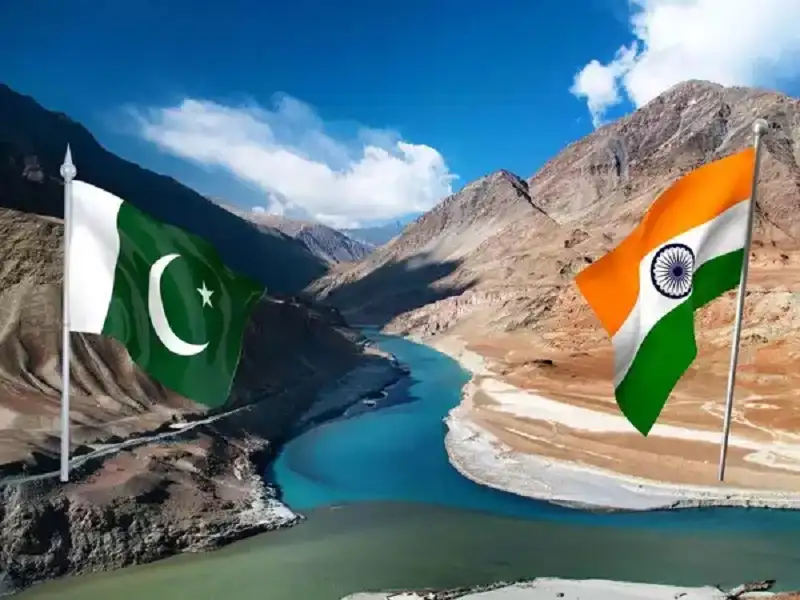Indus Waters Treaty Suspended: Could India’s Bold Move Leave Pakistan Thirsting for Survival?
In a dramatic turn of geopolitical events, India has taken a decisive step that could reshape South Asia’s balance of water and power — suspending the long-standing Indus Waters Treaty. The decision has sparked concern in Islamabad and created ripples in diplomatic circles worldwide. With the threat of cutting off water to Pakistan’s fertile regions, many now wonder: Is Pakistan on the brink of becoming a water-starved desert?

A Quick Recap: What Is the Indus Waters Treaty?
Back in 1960, India and Pakistan signed the Indus Waters Treaty with support from the World Bank. Despite wars and frequent border tensions, this treaty stood as a rare example of cooperation between the two rivals.
- India gained exclusive rights over the eastern rivers — Ravi, Beas, and Sutlej.
- Pakistan received the western rivers — Indus, Jhelum, and Chenab.
- While India controls the upstream areas, it may only use the western rivers for limited irrigation, hydropower, and non-consumptive purposes.
This framework ensured that Pakistan received about 80% of the Indus Basin’s total water flow, which remains essential for its agriculture and drinking needs.
Why Did India Suspend the Treaty Now?
India’s decision appears to stem from rising tensions related to terrorism, cross-border attacks, and repeated ceasefire violations. Officials in New Delhi argue that they have shown patience for decades, yet Pakistan continues to provoke hostilities.
Furthermore, India is facing its own water challenges. In light of growing domestic shortages and strategic concerns, Indian authorities believe it’s time to revisit the treaty. Some analysts view this move as a form of non-violent pressure on Pakistan — a calculated shift rather than a complete rupture.
The Domino Effect: 5 Ways Pakistan Could Suffer
If India fully exploits its rights under the treaty or restricts water beyond those limits, the consequences for Pakistan could be devastating. Here are five key areas likely to face a serious impact:
1. Agriculture May Collapse in Punjab and Sindh
Pakistan’s breadbasket regions depend heavily on the Indus River. Any reduction in flow could severely damage wheat, rice, and sugarcane production. As a result, food shortages and inflation could follow.
2. Urban Water Supply Could Dwindle
Major cities like Lahore, Karachi, and Islamabad already struggle with water scarcity. A further drop in water levels could trigger widespread shortages, particularly during summer. Without urgent solutions, public unrest could intensify.
3. Energy Supply May Take a Hit
Pakistan generates a significant share of its electricity from hydropower. If upstream water flow decreases, power production could shrink, leading to more blackouts. This would hurt factories, homes, and essential services alike.
4. Economic Stability Might Crumble
Agriculture and textiles, two water-intensive sectors, form the backbone of Pakistan’s economy. Lower water availability could reduce exports, widen trade deficits, and weaken the rupee. Investors might lose confidence, and economic growth could slow.
5. Social and Political Tensions Could Erupt
Water scarcity often breeds conflict. If provinces begin to compete for dwindling supplies, inter-provincial tensions could spike. Political instability might follow, especially if the government fails to respond quickly.
Is India Breaking the Law?
Many experts are debating this question. Critics claim that India’s move violates international law and could set a dangerous precedent. However, Indian officials insist they’re acting within the treaty’s terms and are merely using their legal rights.
So far, India hasn’t blocked Pakistan’s entire water share. Nevertheless, the suspension sends a strong message — one that’s hard to ignore. Even symbolic pressure, in this case, may achieve the intended geopolitical effect.
Pakistan’s Countermove: Diplomacy and Dams
In response, Pakistan has launched a full-scale diplomatic campaign. The country is appealing to international organizations and seeking support from allies like China and Turkey. Additionally, Pakistan is considering legal action at the International Court of Arbitration.
At home, the government is rushing to revive stalled water projects, including the controversial Kalabagh Dam. However, this could spark internal disputes, as several provinces oppose it on political and environmental grounds.
Could This Lead to War?
Given that both nations possess nuclear weapons, any escalation remains a global concern. While war seems unlikely at the moment, water has now emerged as a new weapon in geopolitical strategy. It’s silent, powerful, and deeply disruptive — especially for nations like Pakistan, which rely on consistent river flows.
Fortunately, diplomatic channels still remain open. If both sides choose dialogue over conflict, there may be room for renegotiation or modernization of the treaty. Either way, the stakes are too high to ignore.
A Bigger Threat: Climate Change
This crisis isn’t just about politics. South Asia is facing a climate emergency. Melting glaciers, erratic monsoons, and declining river flows threaten long-term water security. The Indus Waters Treaty was signed more than six decades ago. In today’s climate reality, outdated agreements may no longer be enough.
Thus, the current standoff could serve as a wake-up call. Both India and Pakistan must work toward sustainable water management — not only for peace but for survival.
Final Thoughts: A Region at the Crossroads
India’s suspension of the Indus Waters Treaty marks a new and potentially dangerous chapter in its relationship with Pakistan. While this might be a tactical response to repeated provocations, the humanitarian and environmental risks are immense.
If diplomacy fails, and water turns into a tool of punishment, millions of lives could hang in the balance. As the world watches this delicate drama unfold, one thing is clear: water, not oil, may be the most contested resource of our century.






